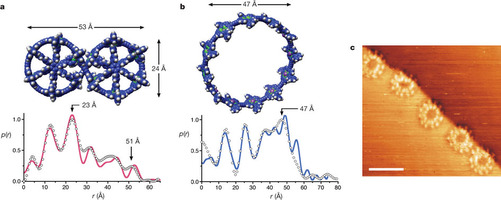Templates are widely used to arrange molecular components so they can be covalently linked into complex molecules that are not readily accessible by classical synthetic methods1, 2, 3, 4, 5, 6, 7. Nature uses sophisticated templates such as the ribosome, whereas chemists use simple ions or small molecules. But as we tackle the synthesis of larger targets, we require larger templates—which themselves become synthetically challenging. Here we show that Vernier complexes can solve this problem: if the number of binding sites on the template, nT, is not a multiple of the number of binding sites on the molecular building blocks, nB, then small templates can direct the assembly of relatively large Vernier complexes where the number of binding sites in the product, nP, is the lowest common multiple of nB and nT (refs 8, 9). We illustrate the value of this concept for the covalent synthesis of challenging targets by using a simple six-site template to direct the synthesis of a 12-porphyrin nano-ring with a diameter of 4.7 nm, thus establishing Vernier templating as a powerful new strategy for the synthesis of large monodisperse macromolecules.





